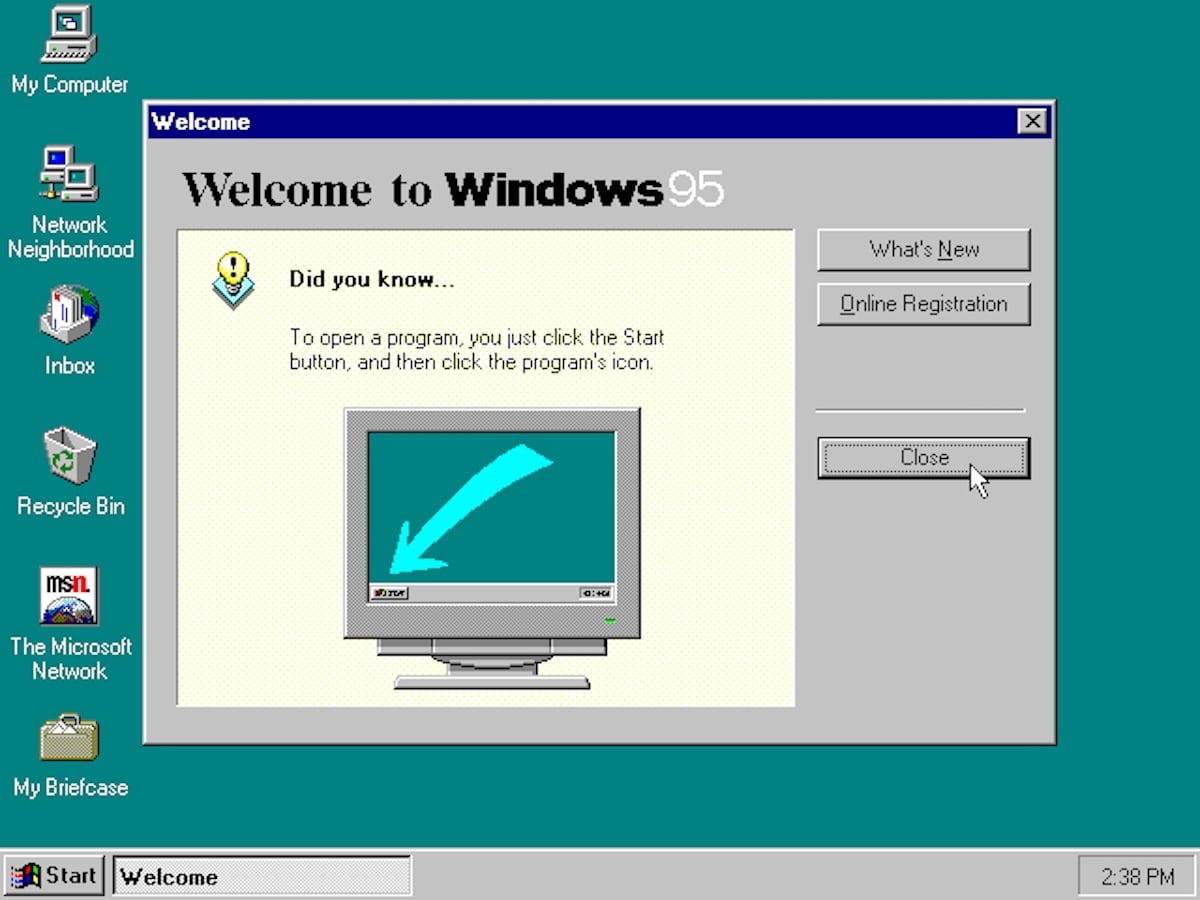Exactly three decades ago, on August 24, 1995, Microsoft launched Windows 95. It wasn’t just a new software release; it was a significant social, technological, and media event. With midnight lines, massive advertising campaigns, and even rock anthems as soundtracks, the launch marked the first time an operating system became a pop culture phenomenon.
The first major tech celebration
In the 90s, tech launches rarely made headlines outside specialized computer magazines. But Microsoft changed the game. With an estimated $200 million advertising campaign and using The Rolling Stones’ “Start Me Up,” Bill Gates’s company achieved the unimaginable: millions of people associating a “Start” button with the future of computing.
Video thumbnail: Microsoft Windows 95 Launch with Bill Gates & Jay Leno (1995)
Images of users queuing outside stores—like fans waiting for a band’s new album—circulated worldwide. The Empire State Building lit up in Windows colors, and a giant banner hung from Toronto’s CN Tower. Microsoft had transformed the launch of an OS into a global spectacle.
Features that now seem basic
Beyond marketing, Windows 95 introduced innovations defining the modern PC experience, such as:
- The Start menu and taskbar—now everywhere on Windows, and replicated on Linux and other OSes
- Long filename support (up to 255 characters), replacing the 8.3 format of MS-DOS
- 32-bit architecture with preemptive multitasking, allowing stable multiple applications running simultaneously
- Plug and Play—an imperfect attempt to auto-detect new devices
- Windows Explorer, replacing the classic File Manager, organizing folders and shortcuts on the desktop
From the vantage point of 2025, these features seem routine; back then, they represented a leap in usability and modernity, appealing to both home users and businesses.
A high price, but an instant hit
The system was sold in boxes with 13 to 15 1.44 MB floppy disks or on CD with a boot disk. The launch price was around $209 (approximately $400 today).
Despite the cost, the response was enthusiastic: $720 million in sales on its first day, and a million copies sold in just four days. A year later, Microsoft celebrated selling 40 million units worldwide.
Much of this success was due to partnerships with over 400 PC manufacturers integrating Windows 95 into their devices and its compatibility with over 4,000 applications in its first year.
The context: the battle for the desktop
In 1995, Microsoft wasn’t alone. Apple continued with its lighter System 7.5, IBM was pushing OS/2, and Linux was emerging as a community project.
[Insert image: Screenshot of Windows 95 start menu]
Windows 95, with its mix of MS-DOS compatibility and 32-bit leap, struck a balance others hadn’t: power without requiring top-tier hardware. The minimum specs were modest: a 386DX processor, 4 MB of RAM, and 55 MB of disk space. In practice, to fully utilize its multitasking and MSN, at least an 486 with 8 MB of RAM was recommended.
The role of entertainment and the web
Windows 95 also helped establish the PC as an entertainment platform. Ten of the eleven leading game publishers supported the system. Titles like Doom, Command & Conquer, and SimCity 2000 found a solid base in its graphical environment and DirectX, shaping the future of PC gaming.
Simultaneously, Internet’s arrival was about to revolutionize computing. While Windows 95 didn’t include Internet Explorer by default (it arrived with the Microsoft Plus! package), it became the gateway to rapid web adoption. Netscape Navigator and later Explorer leveraged its 32-bit infrastructure to open the digital world to millions.
A legacy that still persists
Though mainstream support ended in 2001, Windows 95 left a lasting mark. Its core concepts—start menu, taskbar, file explorer—are still in Windows 11 and inspired Linux environments like KDE and XFCE.
Even pop culture embraced it: the startup sound, composed by Brian Eno, was added in 2025 to the U.S. National Recording Registry for its cultural significance.
Looking back, Windows 95 was more than an OS; it demonstrated that computing had become an integral part of everyday life, moving beyond the realm of experts.
FAQ
When was Windows 95 released?
It officially launched on August 24, 1995, after months of anticipation and unprecedented advertising.What were the minimum system requirements?
A 386DX processor, 4 MB RAM, a VGA monitor, and about 55 MB of disk space. For optimal performance, a 486 with 8 MB RAM was recommended.Why was Windows 95 so important?
Because it introduced features still integral today: the start menu, taskbar, Internet integration, and 32-bit multitasking.How much did Windows 95 cost at launch?
Approximately $209, which is about $400 adjusted for inflation in 2025.

